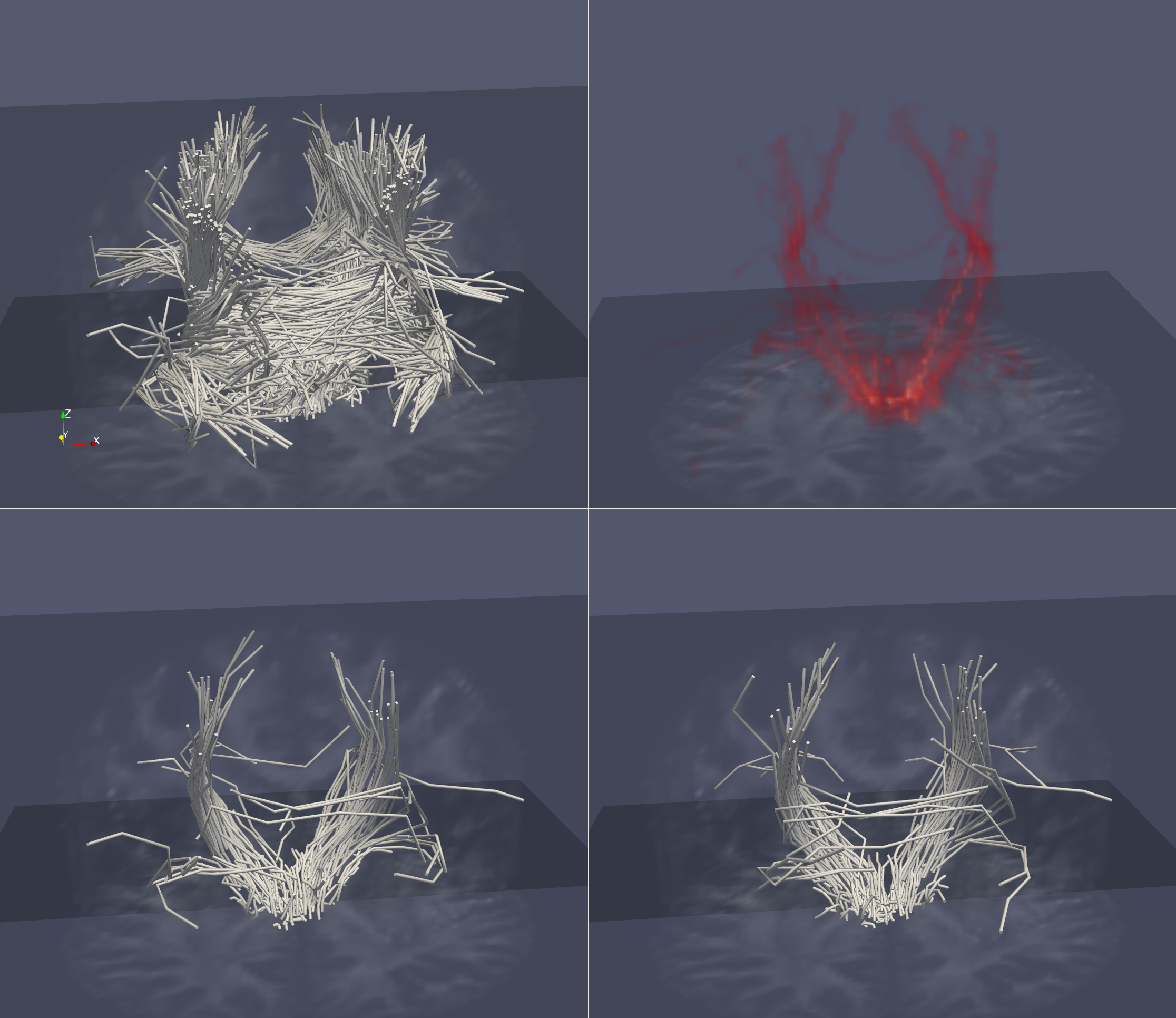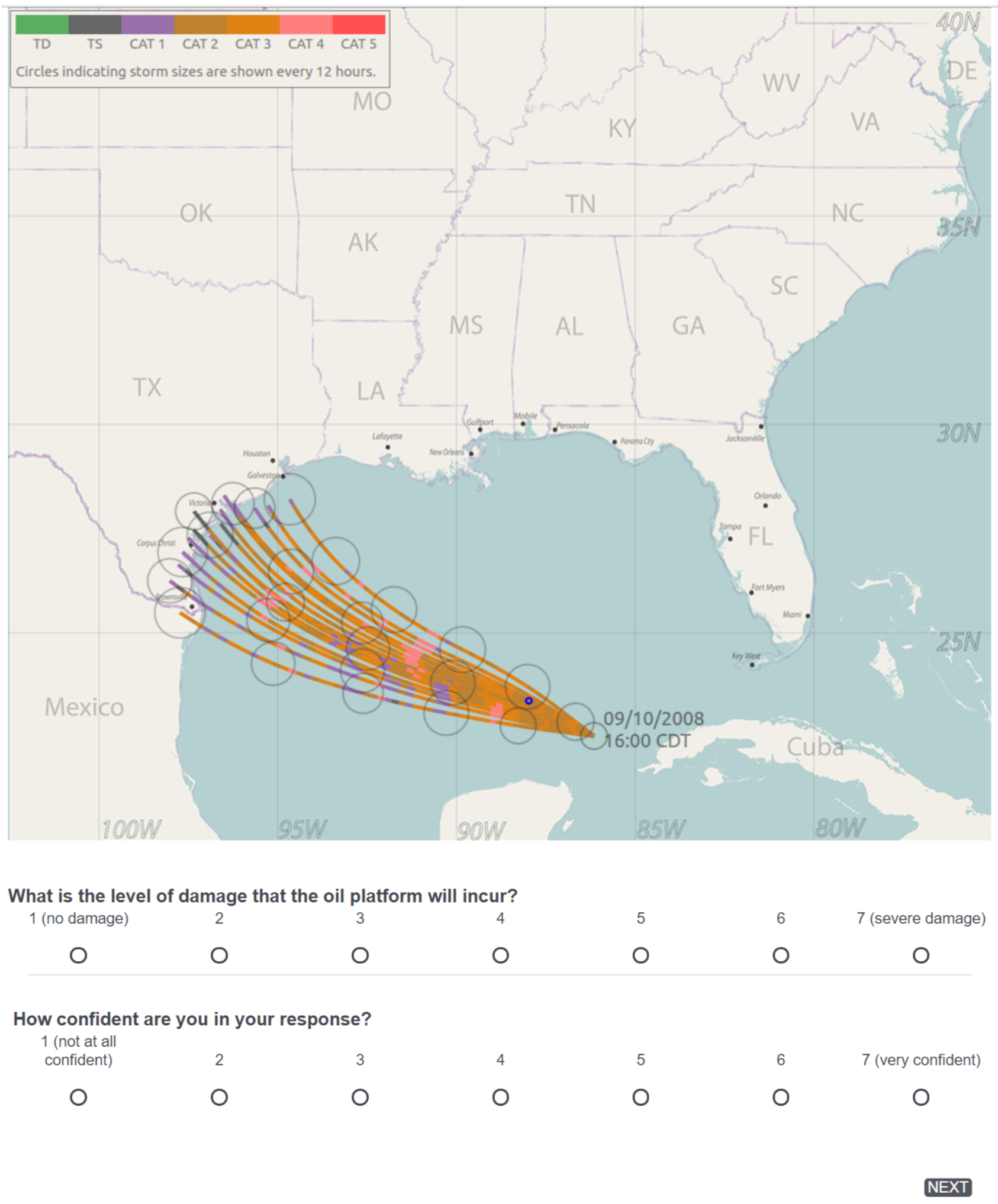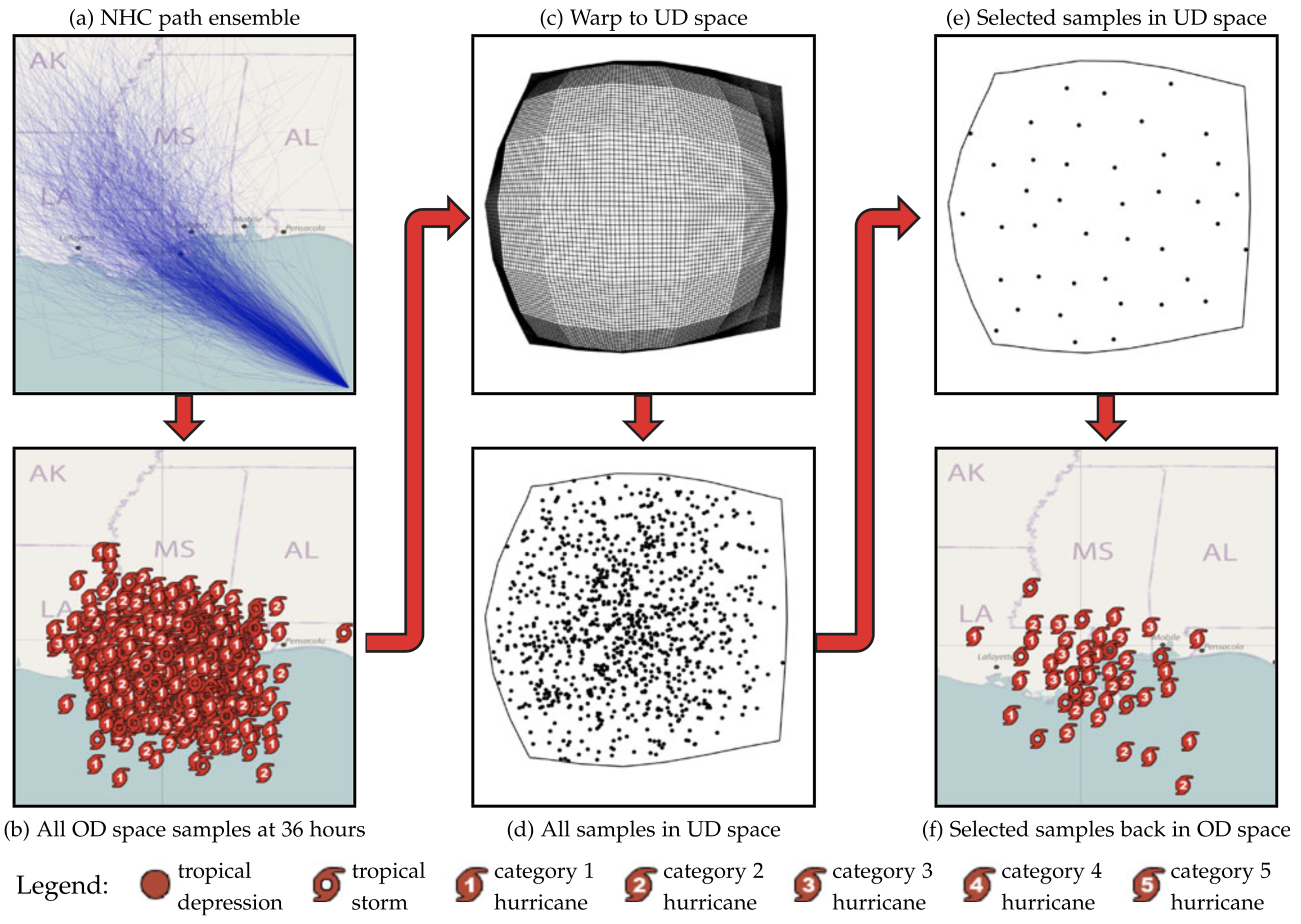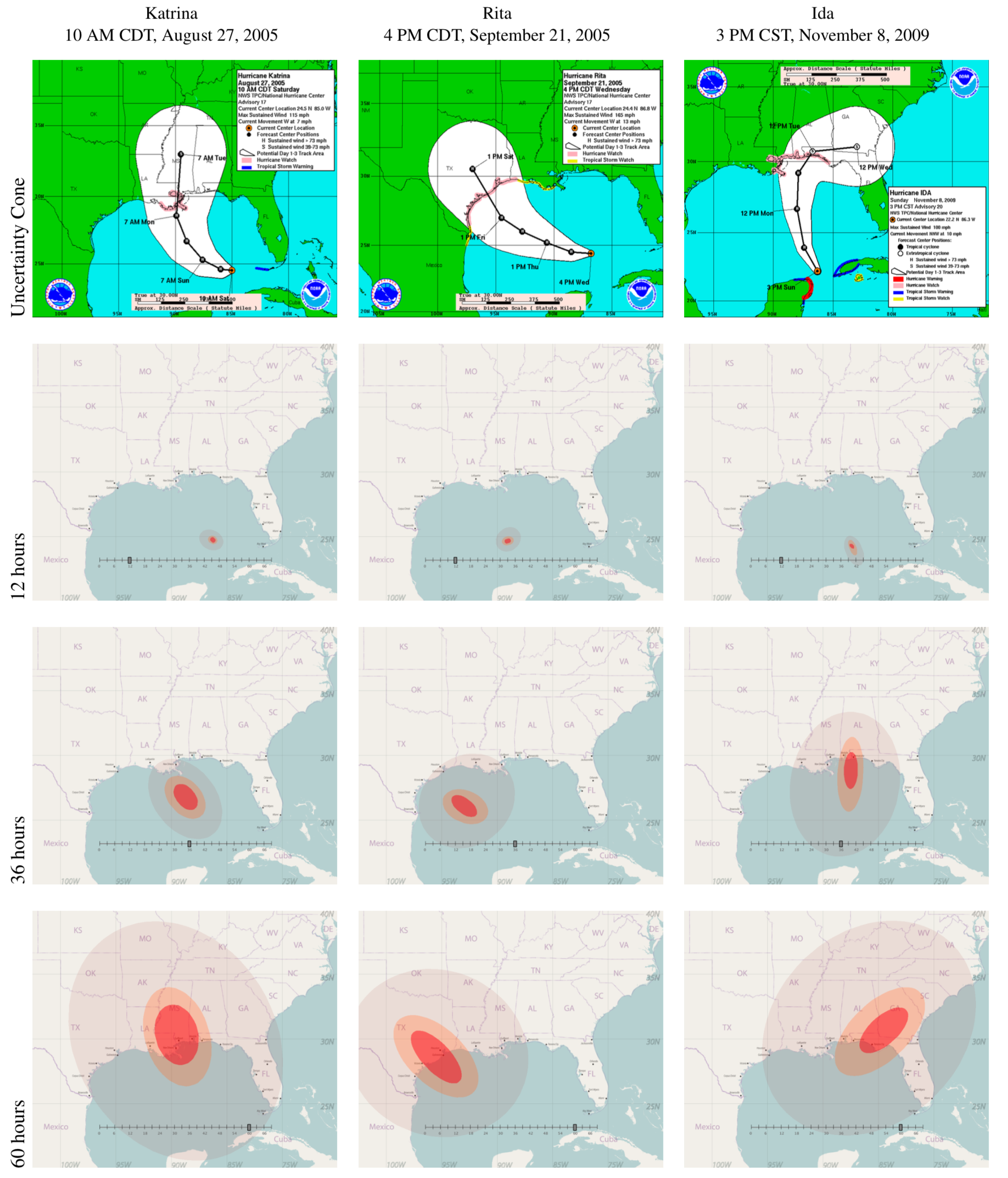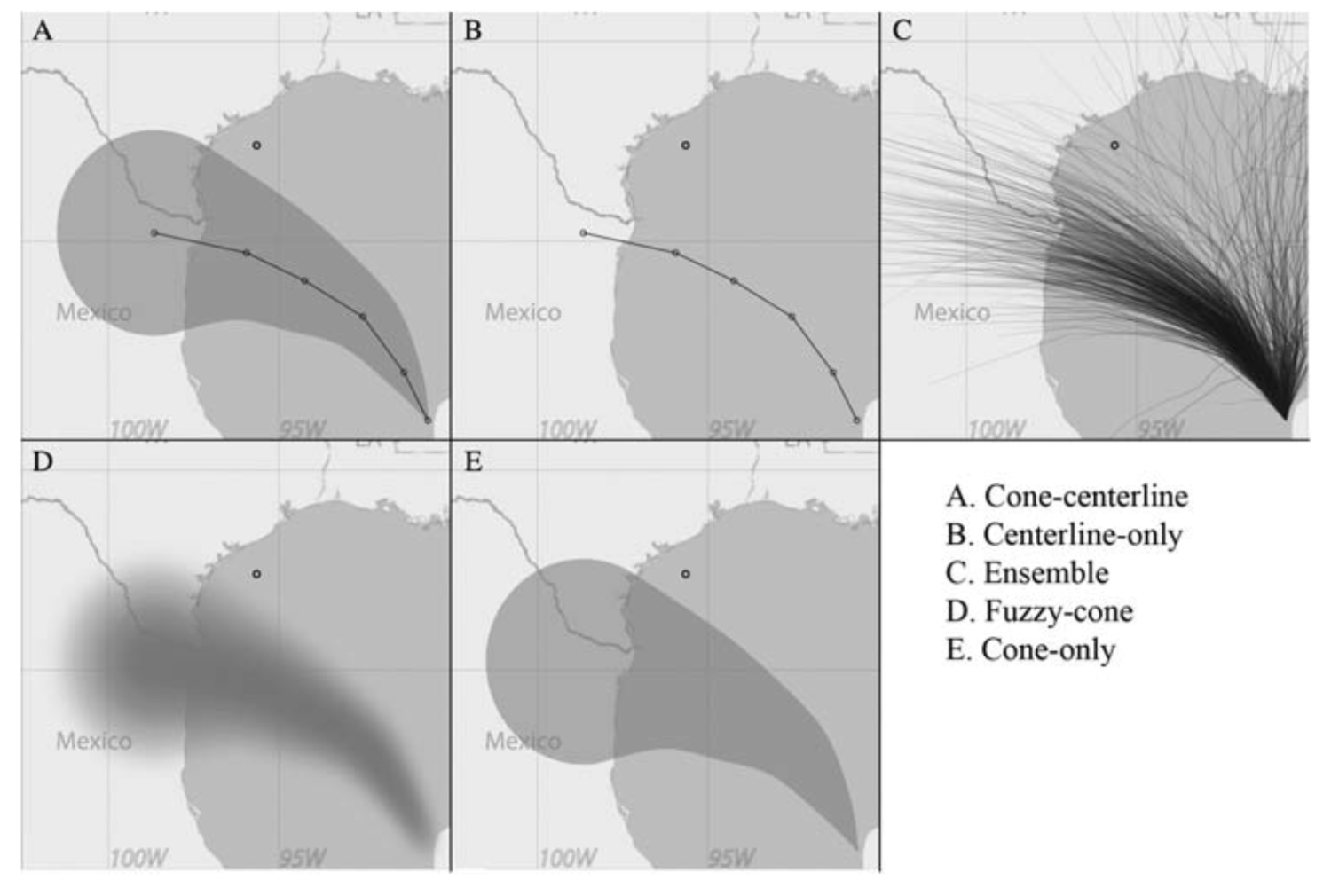A common approach to sampling the space of a prediction is the generation of an ensemble of potential outcomes, where the ensemble’s distribution reveals the statistical structure of the prediction space. For example, the US National Hurricane Center generates multiple day predictions for a storm’s path, size, and wind speed, and then uses a Monte Carlo approach to sample this prediction into a large ensemble of potential storm outcomes. Various forms of summary visualizations are generated from such an ensemble, often using spatial spread to indicate its statistical characteristics. However, studies have shown that changes in the size of such summary glyphs, representing changes in the uncertainty of the prediction, are frequently confounded with other attributes of the phenomenon, such as its size or strength. In addition, simulation ensembles typically encode multivariate information, which can be difficult or confusing to include in a summary display. This problem can be overcome by directly displaying the ensemble as a set of annotated trajectories, however this solution will not be effective if ensembles are densely overdrawn or structurally disorganized. We propose to overcome these difficulties by selectively sampling the original ensemble, constructing a smaller representative and spatially well organized ensemble. This can be drawn directly as a set of paths that implicitly reveals the underlying spatial uncertainty distribution of the prediction. Since this approach does not use a visual channel to encode uncertainty, additional information can more easily be encoded in the display without leading to visual confusion. To demonstrate our argument, we describe the development of a visualization for ensembles of tropical cyclone forecast tracks, explaining how their spatial and temporal predictions, as well as other crucial storm characteristics such as size and intensity, can be clearly revealed. We verify the effectiveness of this visualization approach through a cognitive study exploring how storm damage estimates are affected by the density of tracks drawn, and by the presence or absence of annotating information on storm size and intensity.
